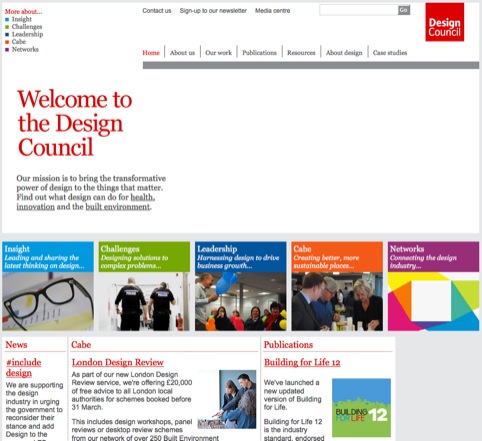Design Council chief executive John Mathers outlines the future of the organisation
John Mathers took over as chief executive of the Design Council last November. Formerly chief executive of Holmes & Marchant, and having held senior roles at Blue Marlin, Fitch and Enterprise IG, Mathers’ task has been to develop the future path for the Design Council. The organisation has, over the last two years, lost its non-Governmental organisation status, reformed as a charity, and merged with the Commission for Architecture and the Built Environment. Mathers tells us about his new role, the Design Council’s new status, and its future path.

What is the Design Council’s mission statement?
We champion great design, it’s as simple as that. But it’s not just great design for great design’s sake, it’s about the sort of design that can positively improve people’s lives. For us that has really surfaced in four strategic themes [growth by design, communities by design, ageing better by design and active by design] that underpin everything that we do. We wanted to give people here a real sense of purpose – what the Design Council is about – and the important thing now is to start to communicate that. So we’ll be making changes to our website and the way we communicate externally to make sure we really are telling that consistently.
What effect has the Design Council’s status change had on the organisation?
We’re going though a bit of a culture change because we need to become more commercial, but equally we’ve got to balance that commerciality with our mission – like any charity we have a purpose and if the commerciality creeps or in any way compromises our abilty to do that then we’re going in the wrong direction.
What is the Design Council’s current funding situation?
We’re a charity – so we’re not here to make a profit – but we need to be commercially viable as an organisation. We have some Government funding still to run – through to 2015 – and after that we’re on our own, so we will be a charity in the sense that we will find our funding to do what our mission is from other avenues. We think funding will come from a variety of different sources. We’re already charging for a number of the services that would traditionally have been provided for free so we’re exploring lots of new avenues.
How do you see the Design Council’s relationship to design consultancies?
Our role is to work with SMEs to identify what opportunities there are and then to bring in the appropriate design, brand or innovation consultancy to help that company move to the next step. Then working with our design associates we will monitor that, evaluate and move forward, so actually what we’re doing is creating a bigger pot for the design industry. We don’t actually do the design work ourselves – and I think that’s an important thing to stress, that maybe a lot of people don’t know.

Which other bodies does the Design Council have a relationship with, and what is that relationship like?
I think we still have a very strong link with Government – Government sees us as the body to come to talk about design and to develop design policy – and I don’t think that will change. The important thing is for us to continue to be what we’ve always been very good at, which is to be a convenor, bringing together the sort of groups and bodies and individuals that can contribute to expanding and taking things forward.
What is your relationship with Government like?
The successful way of talking to government is to give them two things – the big statistics that demonstrate at a high level the contributuon design can make, and then to evidence that with the stories that show how it works practically. The question I get asked more than anything else is, ‘What is design?’, and if I can demonstrate that by the tangible contribution that design thinking has made to the growth of an organisation then that becomes real.
Are there any aspects of design that Government finds difficult to grasp?
I think design being difficult to define is the main one. The design industry has been particularly poor in being cohesive and talking about what design is. I think we have over the years been too parochial, too divisive and too siloed in our approach. The design industy has to come together to act as one because our time is now.
What has it been like bringing the Design Council and CABE together?
I spoke to [former Cabe chairman] Stuart Lipton about this and he said, ‘John, it’s all design’, and he’s absolutely right. Cabe has always been about celebrating and championing great design. Funnily enough architects always talk about design – it’s the designers who somehow think architects are a funny bunch…





Shame someone didn’t proofread this before it went out as it’s riddled with misspellings/typos.